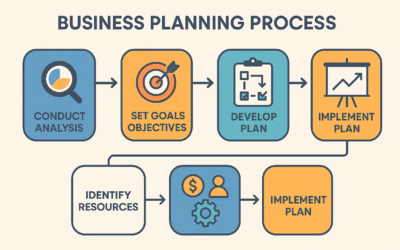Are you among the many Americans who continue to hold a full-time job (working 30 hours or more a week) while attending post-secondary education? A report from Georgetown University found that roughly 40 percent of undergraduates continued to work while attending school, and over 75 percent of graduate students also worked.
You’re more likely to meet a student who is still working outside of their schooling from those numbers.
For many, those numbers likely are not surprising. Continuing your education past high school is quite expensive. As much as students would like to focus their sole attention on their studies, that cannot be the reality for many due to the financial strain of post-secondary education.
If you’re one of the many American students balancing their school and full-time job each week, Global Resources has four tips to help you manage.
Opt for Online Class
If you have the opportunity to do so, look for online classes instead of in-person ones. Although virtual courses can sometimes be more challenging, they offer flexibility that a scheduled class doesn’t – you can attend and do the class according to your schedule.
Just make sure to remember you still have assignments and test deadlines to meet.
Speak With Your Boss
You might be surprised that your employer could be quite understanding and offer you flexibility with your work schedule to accommodate your academic workload, especially if your school is furthering your education for your current job.
Before you become overwhelmed and stressed, speak with your boss first. Let him or her know that you’re enrolled in classes. You might be able to take advantage of flextime, leave for studying and tests, or even an option to work from home.
Learn to Schedule and Prioritize
When you’re juggling between two significant tasks like work and school, scheduling and prioritizing are substantial. Take some time at the start of the week to plan out your schedule. What deadlines do you have for work and school that should be of top priority? Schedule those in first and dedicated time to work on them before moving on to other items.
When you create your schedule, make sure to carry it with you and actually use it. Your schedule and priority list will only do so much if you don’t use them. That way, when something pops up for work, or personally, you can see if it’s something you can fit in or have to delegate somewhere else.
Avoid Burnout
A tip to quickly overlook is to take breaks and moments to yourself. Although you may want to take advantage of every waking moment to get work done, it’s essential that you give yourself some downtime. Not doing so will get you on the path of burnout and will only put you further behind down the road.
When you find your groove, avoid the mentality that you can handle more (unless you genuinely can). Instead, take those moments to get ahead of the school schedule and give yourself a mental break.
Balancing school and working full-time is a challenge. However, the above four tips can get you started on a path that will ease your stress and have you hitting every deadline.

0 Comments